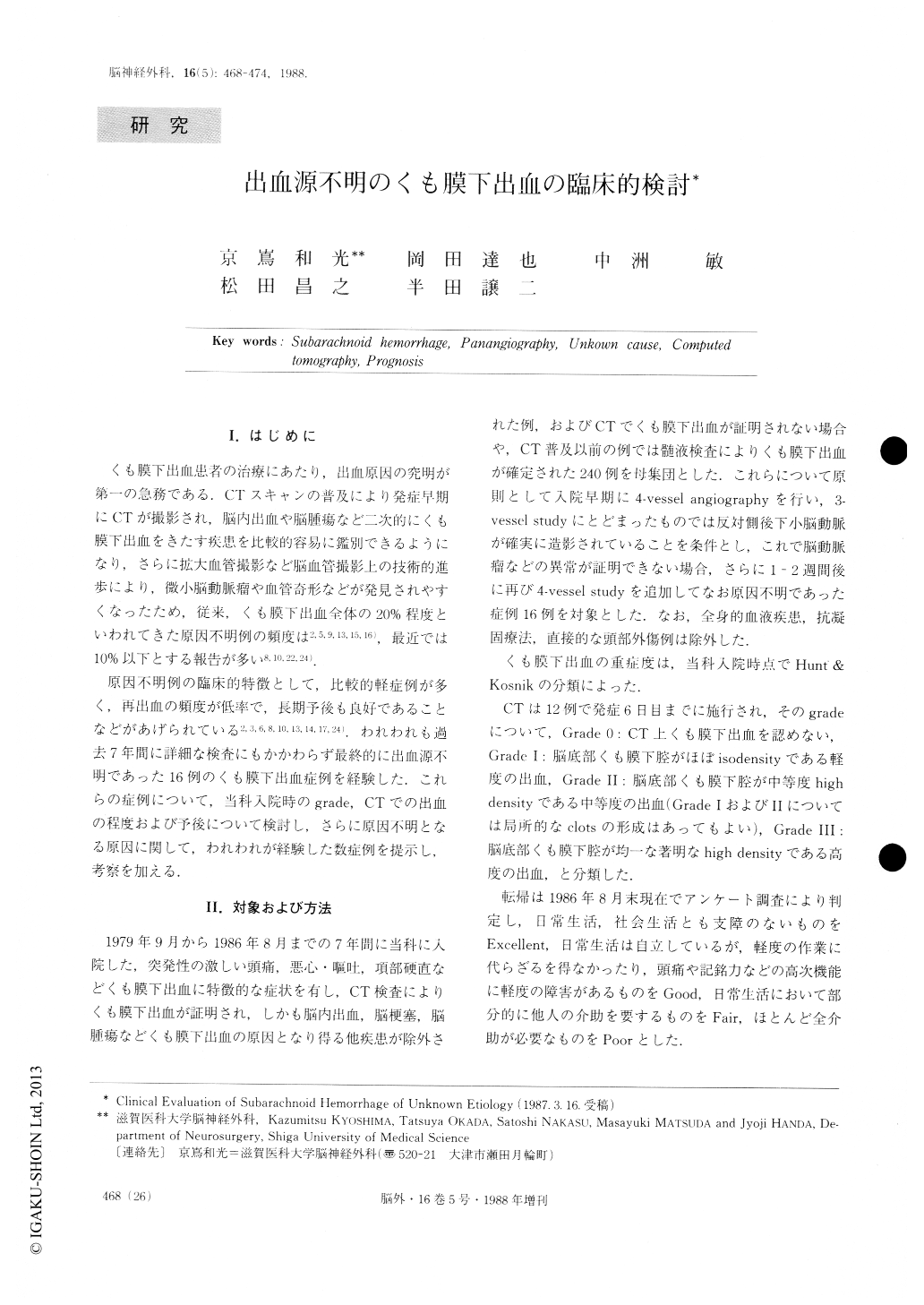Japanese
English
- 有料閲覧
- Abstract 文献概要
- 1ページ目 Look Inside
I.はじめに
くも膜下出血患者の治療にあたり,出血原因の究明が第一の急務である.CTスキャンの普及により発症早期にCTが撮影され,脳内出血や脳腫瘍など二次的にくも膜下出血をきたす疾患を比較的容易に鑑別できるようになり,さらに拡大血管撮影など脳血管撮上の技術的進歩により,微小脳動脈瘤や血管奇形などが発見されやすくなったため,従来,くも膜下出血全体の20%程度といわれてきた原因不明例の頻度は2,5,9,13,15,16),最近では10%以下とする報告が多い8,10,22,24).
原因不明例の臨床的特徴として,比較的軽症例が多く,再出血の頻度が低率で,長期予後も良好であることなどがあげられている2,3,6,8,10,13,14,17,24),われわれも過去7年間に詳細な検査にもかかわらず最終的に出血源不明であった16例のくも膜下出血症例を経験した.これらの症例について,当科入院時のgrade,CTでの出血の程度および予後について検討し.さらに原因不明となる原因に関して,われわれが経験した数症例を提示し,考察を加える.
This study concerns 16 cases with spontaneous subarachnoid hemorrhage ( SAH) of unknown etiology experienced in our department during a period from September 1979 through August 1986. SAH was confirmed by computed tomographic scanning (CT) or lumbar puncture. All cases were studied by four or three-vessel study. In the case of three-vessel study, adequate opacification of the posterior inferior cerebellar artery contralateral to the injected vertebral artery was considered as a necessary condition. Panangiography was repeated in all patients one to two weeks after the initial study and was negative.

Copyright © 1988, Igaku-Shoin Ltd. All rights reserved.


